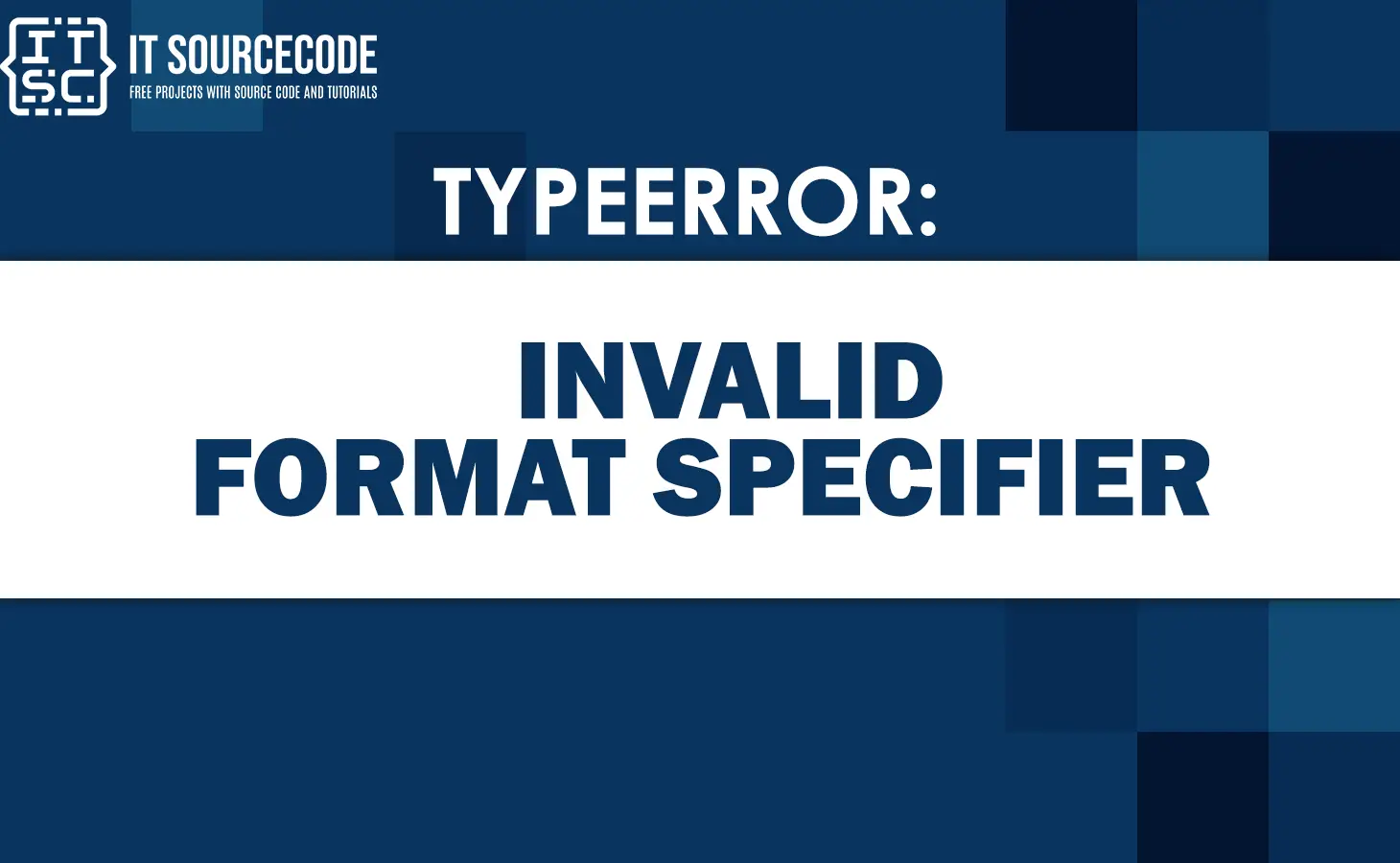If you are working with formatting operations, you might encounter the error message valueerror invalid format specifier.
This error occurs when the formatting specifier used in the string does not match the value being formatted.
In this article, we will explore examples of this error and provide solutions to fix it.
Understanding the ValueError Invalid Format Specifier
When you encounter the ValueError Invalid Format Specifier in Python, it means that there is a mismatch between the formatting specifier and the value being formatted.
The formatting specifier is a special syntax used within strings to define the desired format for variables or values.
Examples of ValueError Invalid Format Specifier
To better understand the ValueError, let’s have a look at some examples:
Example 1: Formatting a String with Incorrect Specifier
name = "Bob"
age = 30
print("My name is %d, and I am %d years old." % (name, age))In the above code, we are using %d to format the string value name. Since %d is meant for integers, it will raise a ValueError Invalid Format Specifier because the formatting specifier and the value do not match.
Example 2: Formatting an Integer with Incorrect Specifier
age = "25"
print("My age is %d." % age)
Here, we are trying to format a string value age using %d, which is intended for integers. Since the formatting specifier and value do not align, it leads to a ValueError.
Example 3: Missing Value for Specifier
name = "Alice"
print("My name is %s, and I am %d years old." % name)
In this example, we are missing the second value required for formatting %d. This will result in a ValueError because the number of specifiers and the number of values provided are not the same.
Solutions to Fix the Error
To resolve the ValueError: Invalid Format Specifier error, you need to make sure that the formatting specifier matches the value being formatted.
Here are some solutions:
Solution 1: Use the Correct Specifiers
Make sure to use the proper formatting specifier for the type of value you want to format.
Here’s a table of commonly used specifiers:
| Specifier | Description |
|---|---|
| %s | String |
| %d | Integer |
| %f | Floating-point |
| %x | Hexadecimal |
| %o | Octal |
By using the correct specifiers, you can avoid the Invalid Format Specifier error.
Solution 2: Convert the Value to Match the Specifier
If you have a value that doesn’t match the expected specifier, you can convert it to the proper type.
Python provides different conversion functions like str(), int(), and float() to convert values between different types.
Here’s an example:
age = "25"
print("My age is %d." % int(age))
Output:
My age is 25.
In this example, we convert the string age to an integer using the int() function before formatting it with %d.
Solution 3: Use Format Method or F-strings
An alternative to the % formatting is to use the format() method or f-strings introduced in Python 3.6+.
These methods provide more flexibility and readability.
Here are examples using both methods:
Using format() method:
name = "Alice"
age = 25
print("My name is {}, and I am {} years old.".format(name, age))Output:
My name is Alice, and I am 25 years old.
Using f-strings:
name = "Alice"
age = 25
print(f"My name is {name}, and I am {age} years old.")Output:
My name is Alice, and I am 25 years old.
Both format() and f-strings eliminate the need for explicit specifiers, reducing the chances of encountering the ValueError.
Additional Resources
Here are the following articles that will be able to help you to understand more about VALUEERRORS:
- valueerror: invalid mode: ‘ru’ while trying to load binding.gyp
- Valueerror too many values to unpack expected 2
- Can only compare identically-labeled dataframe objects
- Valueerror: bad marshal data unknown type code
- Valueerror: cannot index with multidimensional key
Conclusion
The ValueError: Invalid Format Specifier error typically occurs when there is a mismatch between the formatting specifier and the value being formatted.
In this article, we discussed the examples and solutions to resolve this error invalid format specifier python.
By using the correct specifiers, converting values, or utilizing the format() method or f-strings, you can effectively handle formatting operations in Python and enhance your coding skills.
FAQs
The ValueError Invalid Format Specifier occurs when the formatting specifier used in the string does not match the value being formatted.
You can fix the error by using the correct specifiers, converting the value to match the specifier, or using the format() method or f-strings.
Yes, you can use the format() method or f-strings as alternatives to % formatting.
Yes, you can mix different types of specifiers in one string. Just make sure the number of specifiers matches the number of values provided.

